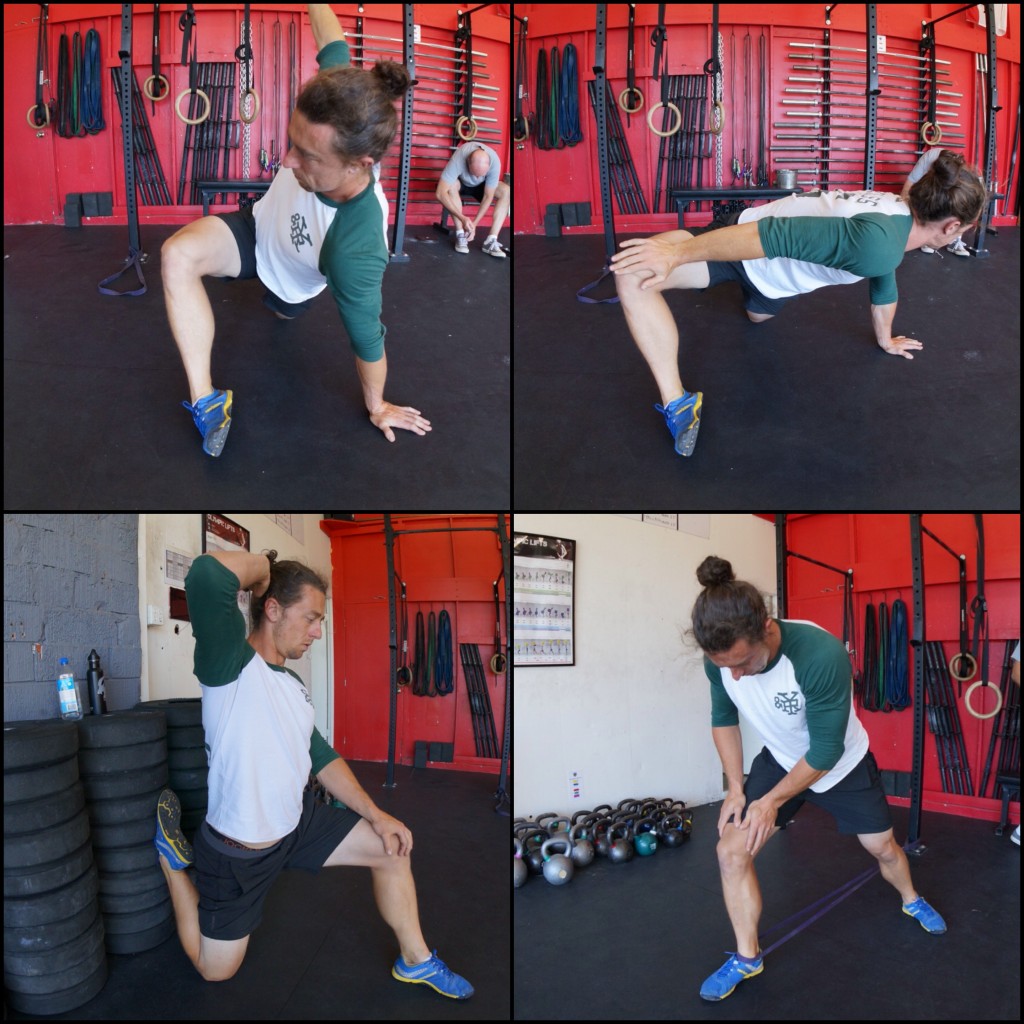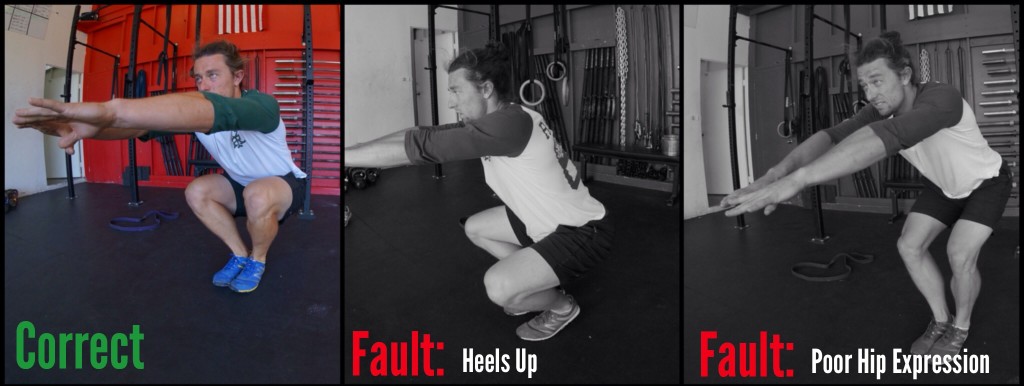Ok athletes, how did you do on last weeks Mobility Test: Part 1? If you haven’t tried the test, click here and do that now.
If you’re ready, Mobility Test: Part 2 will get away from the shoulders and back, and get into your hips. It’s another simple test, but it’s quite a telling test.
Test #2: Narrow Stance Squat
A squat is a squat, right? Well sometimes our squats, especially air squats, don’t tell the whole story. When we start blocking movement and challenging things a bit further we can often learn more about our movement. Narrowing the squat stance and blocking the toes from turning out can help us discover range of motion issues often swept under the rug with a wider stance or toes that spin out to accommodate hip inflexibility. Here’s the test:
1. Start with your normal squat stance width.
2. Point your toes forward.
3. Squat.
4. Continue this process narrowing your stance each rep until you fail, or until you successfully complete a squat with both feet together. In this case, a failure would be denoted as less than full hip expression, heels coming off the ground, and/or toes spinning out.
Common Faults: 1) limited hip range of motion (hips cannot express beyond 90 degress and or toes spin out) or 2) limited hamstring and/or ankle range of motion (heels come off the floor).
If you’ve successfully passed this test, you’re ready to try Test #3. Stay tuned. If you’ve failed, you’ll need a game plan.
Hip Range of Motion (ROM) Fault. If you failed the test above at some point prior to a full depth squat with feet together because of limited hip range of motion, you can begin growing this range of motion in a number of ways.
One easy way made famous by movement specialist, Kelly Starrett, includes opening the hip joint with both internal and external forces. Step into a long lunge, place your hand opposite of that of the foot that is forward on the ground, and rotate your torso into the leg that is forward. Trying to draw your belly button towards your inner thigh, you can oscillate around the foot that is forward to search for areas in the hip that are in need of mobilizing. Do this for 1-2 minutes before transitioning away from the leg that is forward by placing your same side hand inside your knee and press away (See photo). Do this for 1-2 minutes before sitting sides.
Many times one’s hip range of motion is limited because of a short psoas from a lifestyle of sitting. Utilize the “couch stretch” as a hip flexor lengthening tool by working your knee as close to a wall as possible with your other leg in a lunge. During the stretch, try to find a neutral pelvis by squeezing your glutes in an effort to scoop your hips forward (the opposite of an extended “arch” position).
These aren’t the only mobilizations to help your hips but they are some. Choose your favorite and get to work!

Top Left: K. Starr Hip Prep (Internal), Top Right: K. Starr Hip Prep (External)
Bottom Left: “Couch Stretch,” Bottom Right: Banded Ankle Mobility
Ankle Range of Motion (ROM) Fault. Flex your ankle so your toes come closer to your nose. This movement, not unlike taking your foot off the gas pedal, is called dorsiflexion. The ability to dorisflex your ankle is important to squatting, especially at fringe applications and ranges of motion. One easy way to grow this range of motion is to “floss” the ankle joint with the help of a band (pictured). If you don’t have a band, you can accomplish a similar goal by doing “knee touches” against a wall. Keep your whole foot on the ground and try to bend at the knee to reach a target (the wall) in front of you, grow this range of motion across 10-12 reps on each side by reaching to the furthest possible target while keep your heel down.
Hamstring Range of Motion (ROM) Fault. Tight hamstrings? If so, you’ll probably run out of room in the bottom of your squat, which is made up for by pulling your heels off the ground. If this is you, you’ll need to lengthen your hamstrings. Static stretching would be a second choice to a more dynamic approach, whether using a band, a partner, or just yourself to “contract and release” through a visibly growing range of motion during stretch.
The ability to squat is home base for anyone looking to achieve some fitness. If you’ve failed this test, there are few things more important to your fitness than working towards a healthy squat. Take heed!
Stay tuned for Mobility Test: Part 3, it’s the third and final test in the series and it’s a doozy!
Logan Gelbrich
@functionalcoach
.
5/21/14 WOD
Complete three rounds for quality of:
12 Ring Rows
8 Partner Assisted GHD
AMRAP 10
Partner A: 8 Knees-to- Elbows
Partner B: Max Thrusters (95/65)
-Switch-


